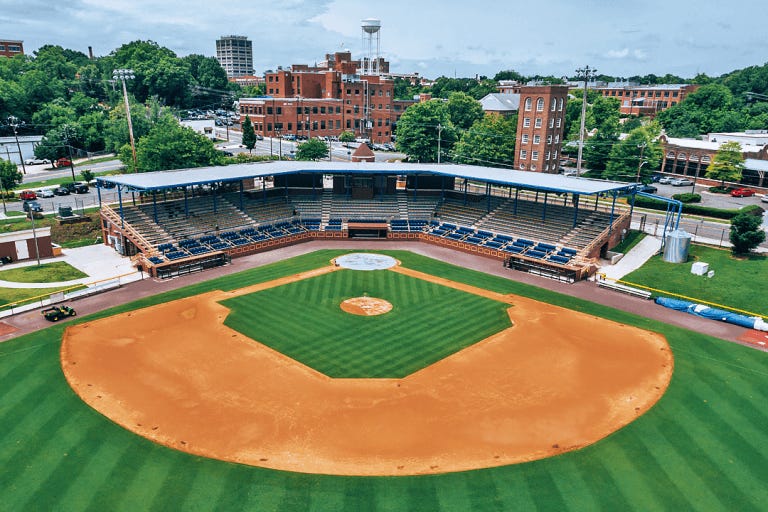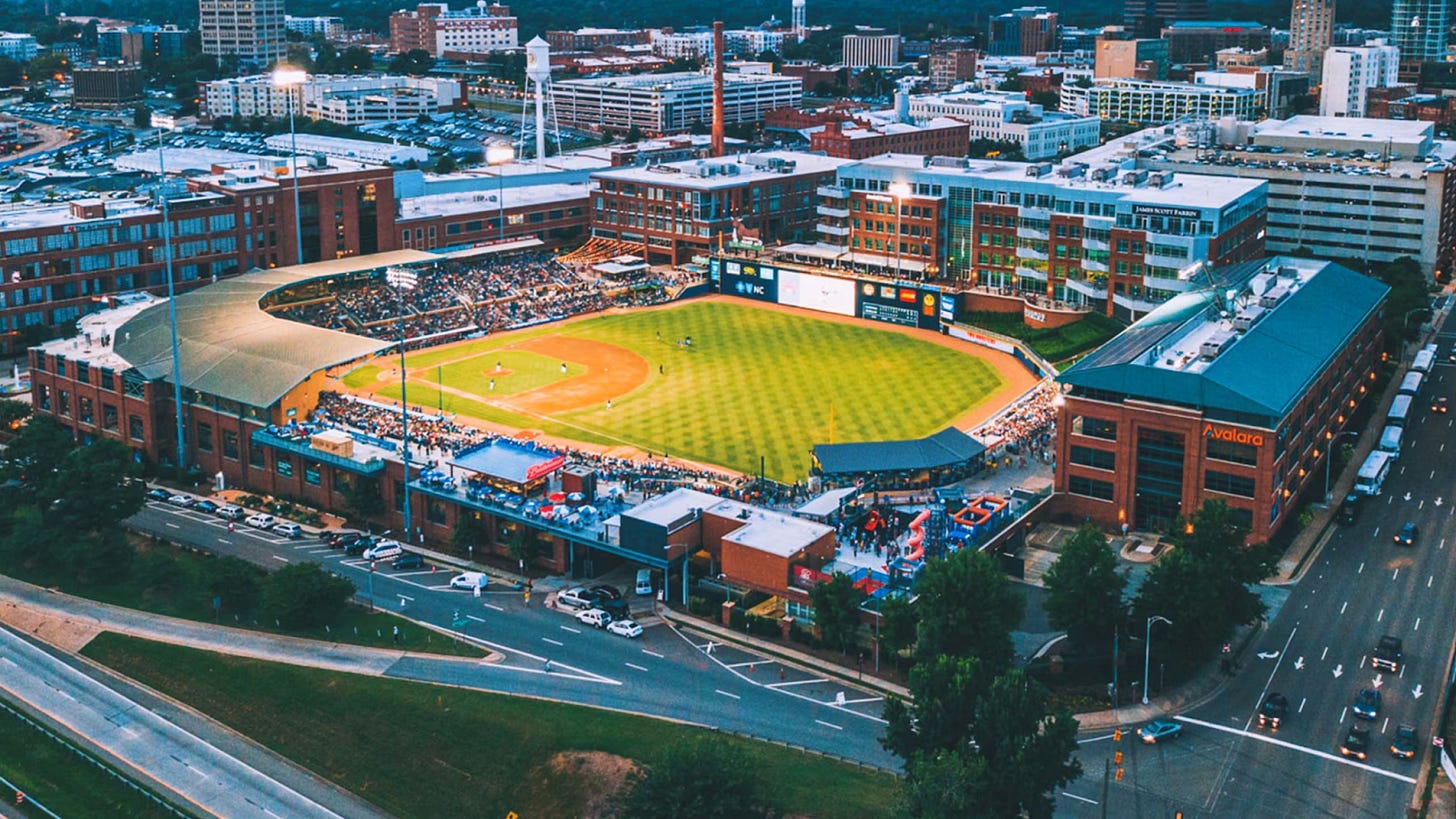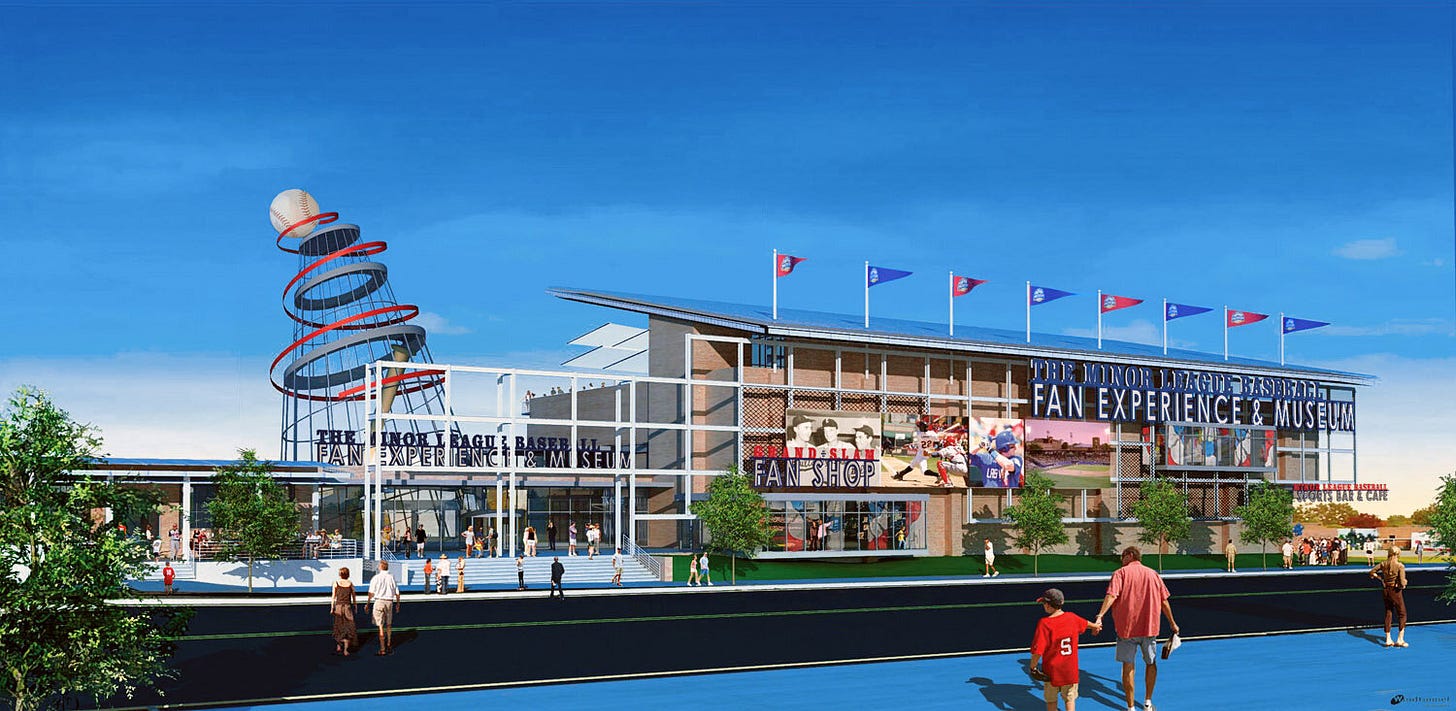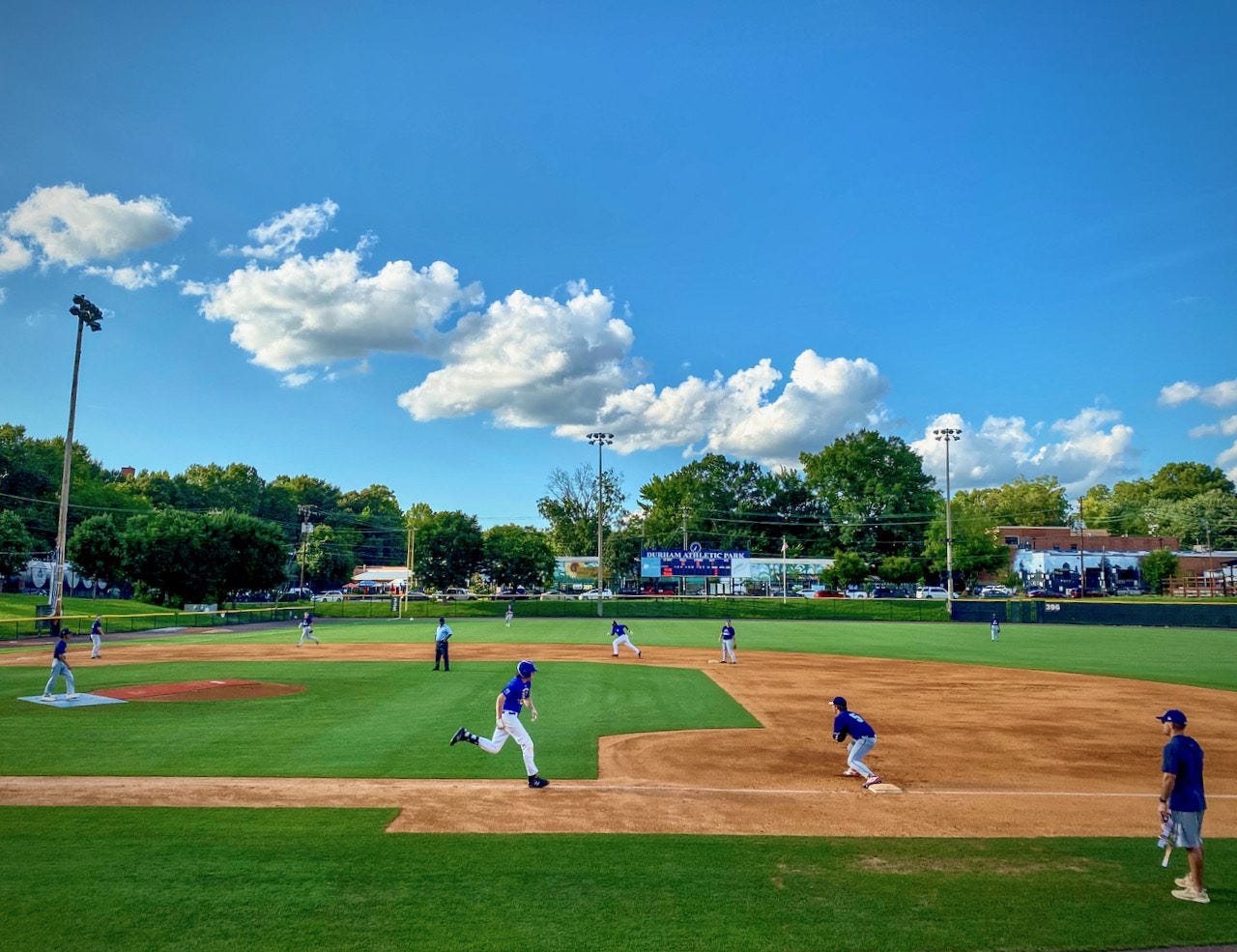When Society Evolves, Baseball is the Constant
How baseball at the Durham Athletic Park offers rootedness in an ever-changing city
This is Part II of a series on baseball and placemaking, focused on the history and redevelopment of the Durham Athletic Park. Part I explored the early history of the ballpark, and why it still matters today.

The Durham Athletic Park isn’t just a historic icon. It’s still a working field.
Tucked between the reimagined Durham.ID Tobacco District, the DAP continues to carry out its mission as both a baseball venue and a cultural gathering place. Over the past few decades, a mix of programming and proposals has kept it active and relevant, from concerts and festivals to high school games and adult sandlot leagues. This second installment in our DAP series explores how the park is used today and why Durham should see its ballpark not as an empty relic, but as a model for integrating baseball into modern urban life.
A History of Mixed Use
Before Camden Yards was built for the Baltimore Orioles and hailed as the stadium that brought baseball back to the city, the Durham Bulls stadium had already done it.
Built into the urban grid in 1939, long before planners coined the phrase "mixed-use," the original DAP connected commercial, industrial, and residential life in downtown Durham. The tradition has continued with the Durham Bulls Athletic Park (DBAP), built in 1995, whose outfield walls now face apartments, offices, restaurants, and bars.
In a national context, Durham stands out as a leader in integrating baseball with walkable urban development. Seldom recognized, it is a success story that deserves appreciation and continuation.

The DAP and DBAP together tell the story of how Durham does baseball its own way. The ballparks are embedded in walkable, mixed-use neighborhoods. They’re not hidden behind parking lots or closed off from everyday life. They’re part of it.
Camden Yards may have made urban ballparks famous, but Durham was ahead of the curve—quietly weaving baseball into the fabric of its downtown. The result is more than just a sports venue; it’s a space that supports community and cultural life.
The Museum That Almost Was
Between 2007 and 2010, Durham explored the idea of developing a Minor League Baseball Museum as a “fan experience museum.” The goal was to create more than just a hall of fame; it was about capturing the full spirit of minor league baseball hopes and dreams in everyday life.

SKOLNICK Architecture + Design worked on a concept that would blend the park’s history with a fresh, interactive twist. Their proposal included:
Interactive exhibits — allowing visitors to step into a broadcast booth, design a team mascot, swing at a simulated 97 mph fastball, and test baseball trivia
A three-story glass tower pavilion with panoramic views of the field and space for a café, learning center, and orientation theater
Memorabilia displays and multimedia galleries telling the story of “how this American pastime is woven into the fabric of communities across the country.”
It wasn’t just about looking at old jerseys in glass cases; it was about letting people step into the game. It was about defining identity through engagement. And defining place through sport.
Mike Birling, longtime Durham Bulls executive and current Vice President, recalled that the idea for a Minor League Baseball museum at the DAP came from former MiLB president Pat O’Conner, who “had a vision of promoting and expanding the history of Minor League Baseball.” Durham, with “the long history of the Bulls,” was the obvious home.
The plan, Birling said, was twofold: “a showcase of the rich history of MiLB,” and a “training ground for everyone from umpires, to groundskeepers, to front office staff.” The museum would have been “part of the DAP’s game day experience,” enhancing visits for fans. Though it never materialized, Birling still believes in the DAP’s potential: “Baseball needs to remain at the forefront,” but “it needs to be more of a community gathering place.”
The museum may not have been built, but the idea persists because it captivated something essential: that baseball is best when it’s felt, not just remembered, and even better when housed in a walkable urban context.
The Field Today
While it’s no longer home to the Durham Bulls, the DAP remains a staple of local baseball. Today, the park regularly hosts games for:
Durham School of the Arts
Adult sandlot leagues through the Carolina Sandlot Collective
Summer baseball leagues and select tournaments
MLB-sponsored Community baseball events like the Long Ball Program

Until the team folded in 2021, it served as the home field for North Carolina Central University, continuing a legacy of HBCU athletics in the city. Other groups, from amateur leagues to clinics and baseball nonprofits, also use the DAP throughout the year. The stadium isn’t dormant, it’s dynamic.
Durham City Stewardship
The City of Durham owns the old ballpark, and operations are managed in partnership with the Durham Bulls organization. The facility receives regular upkeep, ensuring that its structure and historic features remain intact while continuing to support everyday use. The field, for the most part, is in great shape.
This public-private stewardship model has worked well over the years, allowing the DAP to remain accessible without falling into disrepair. Compared to many small stadiums around the country, Durham’s commitment to care sets an important precedent. It shows the city is capable of taking care of the facility and more ambitious visions.
In the final installment, Part III, we’ll look at the future of the DAP and explore how Durham might continue this legacy while meeting modern needs. For now, let’s recognize what already exists: a place where baseball lives, memory endures, and the city still comes together.
Levent Goknar is the James Hardie Fellow for Urban Development. He is a Durham native and student at the University of Wisconsin-Madison.


